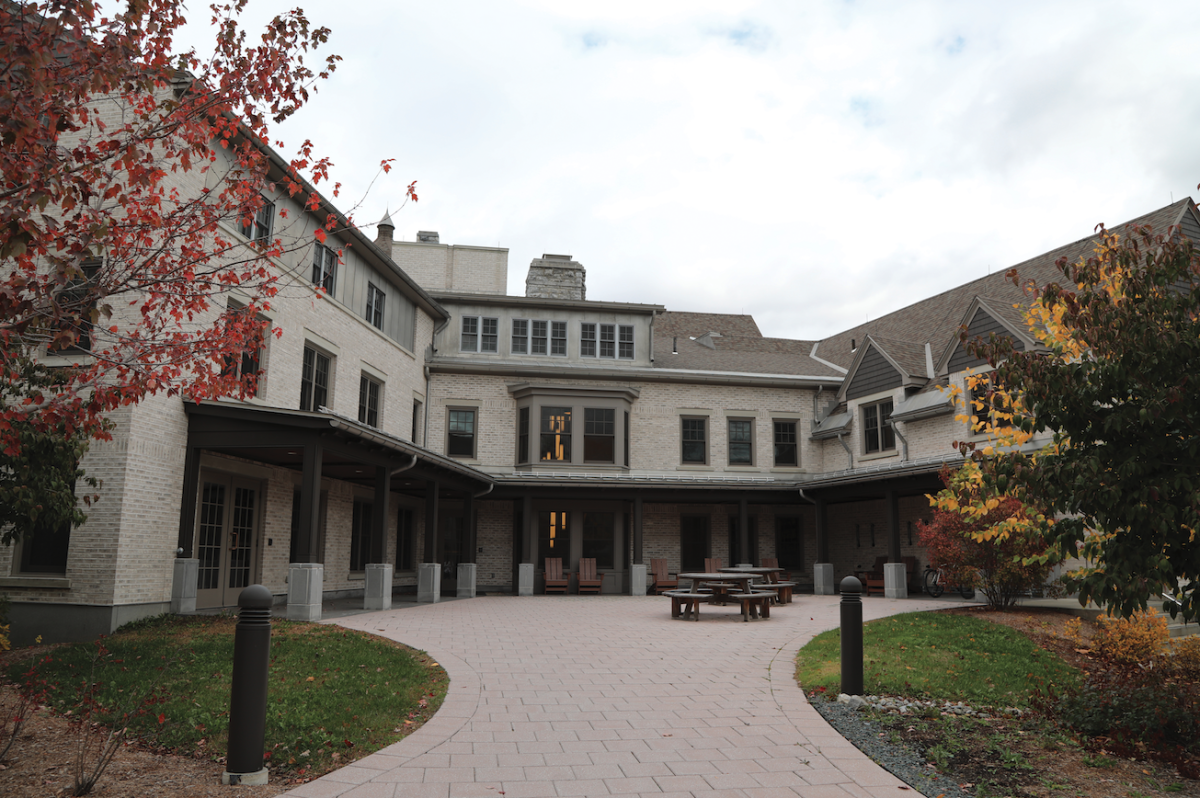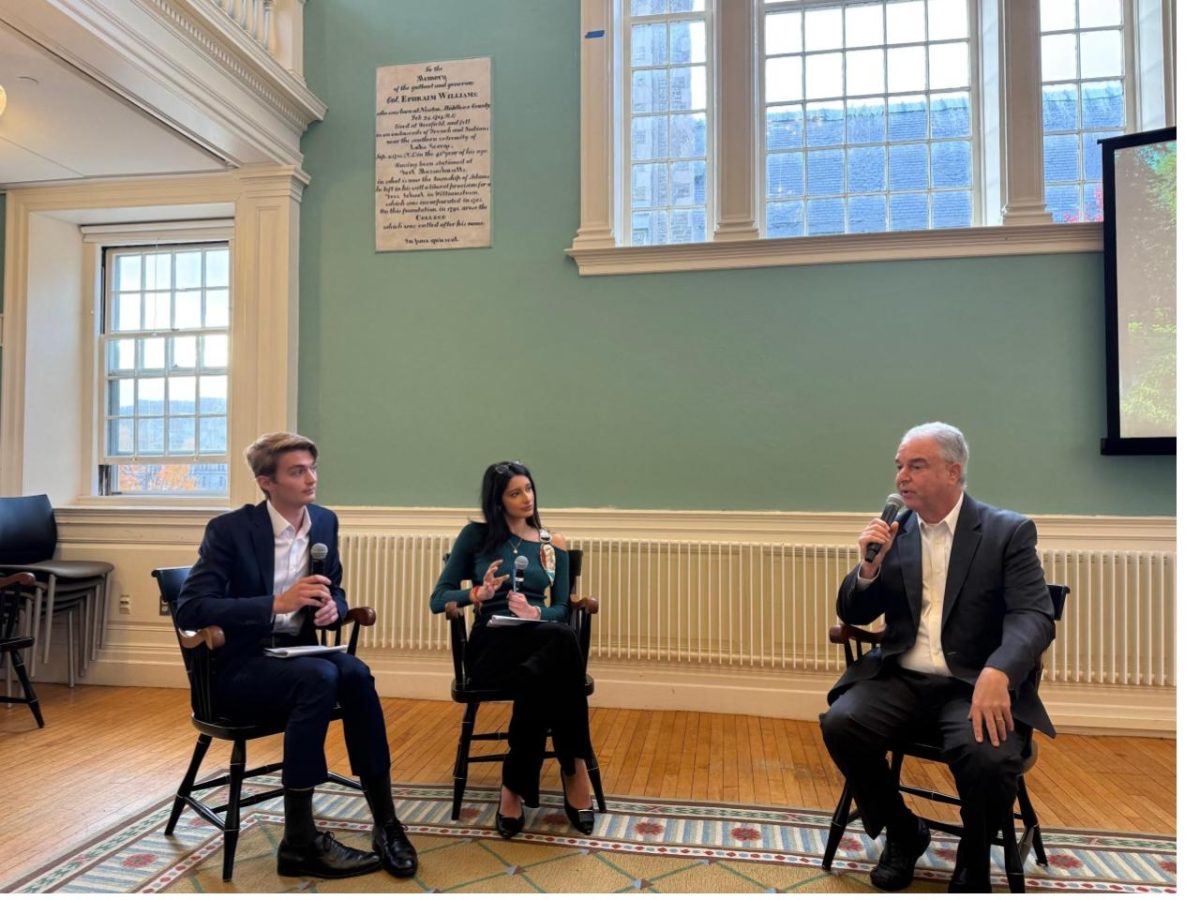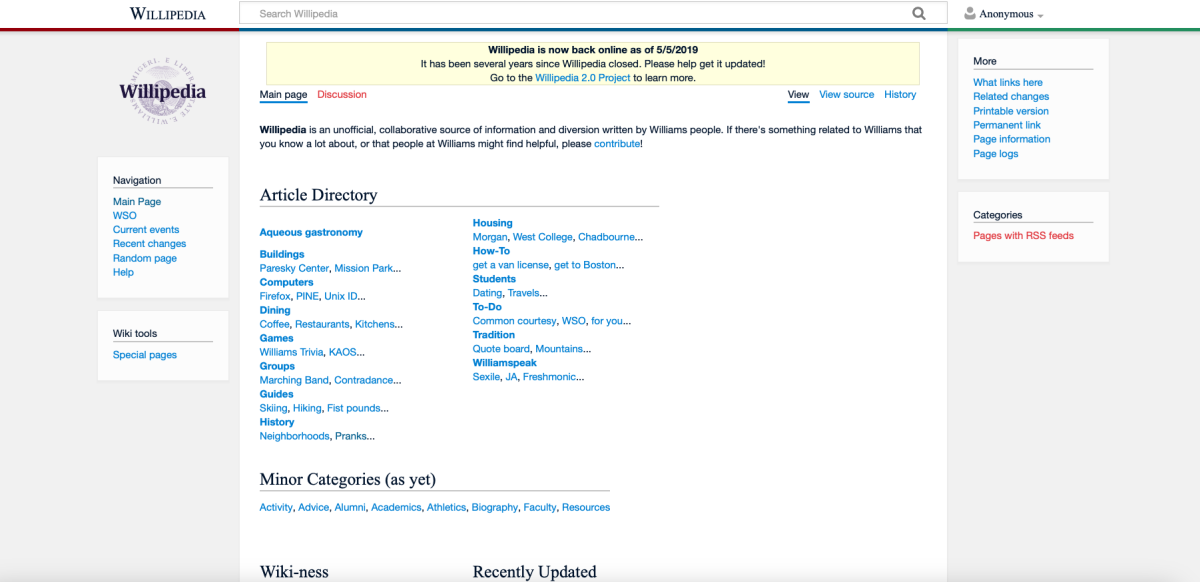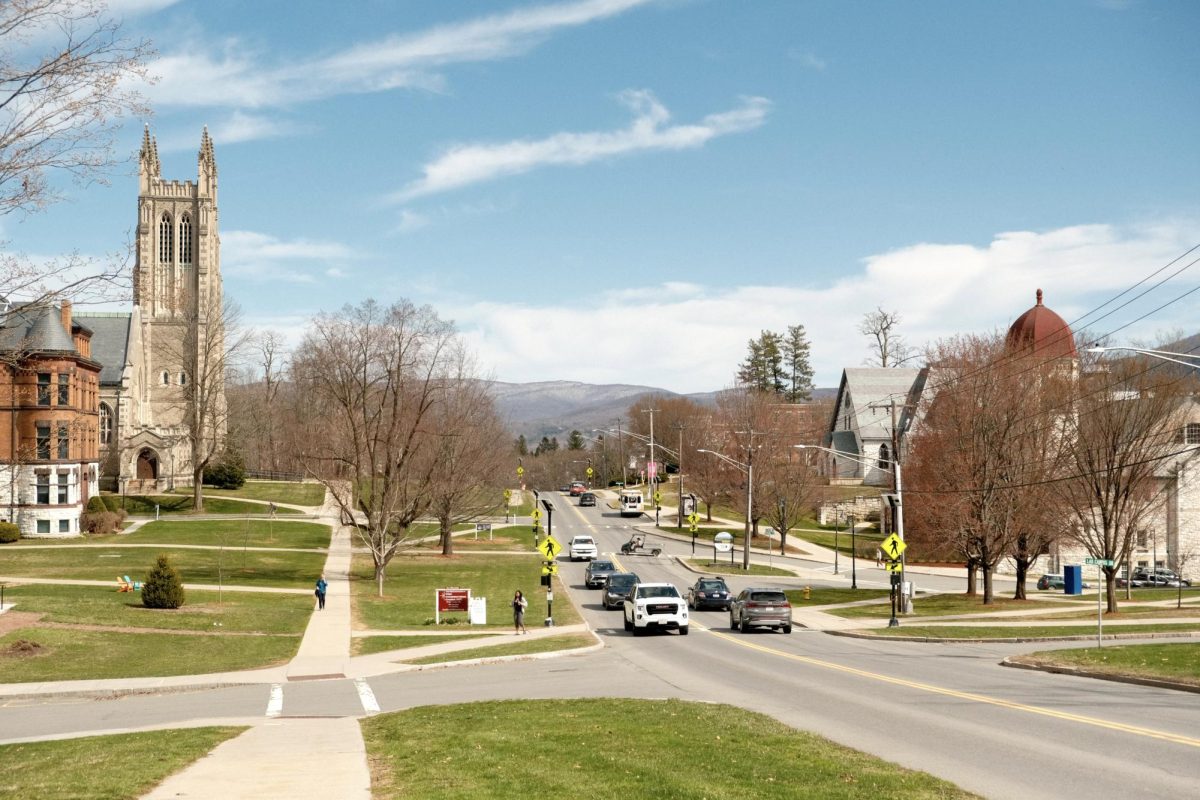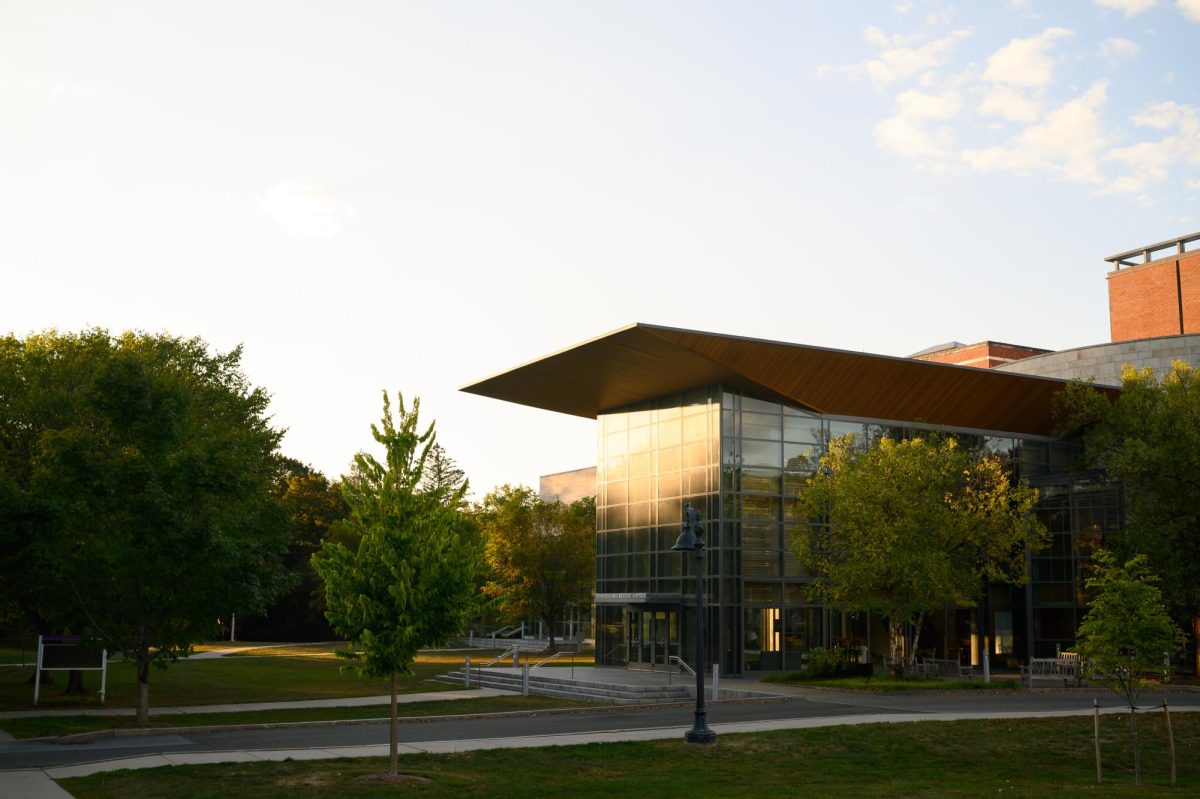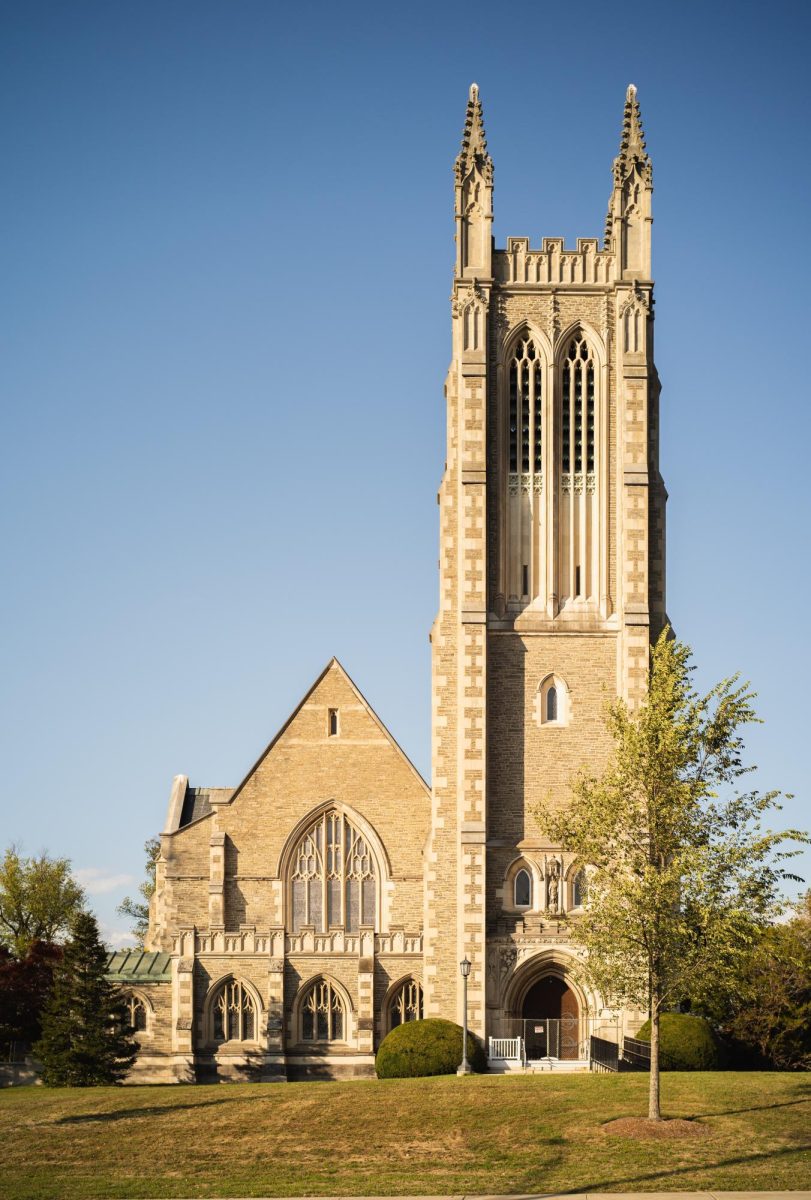COVID-19 testing is now a part of daily life for on-campus students, faculty and staff at the College. Moving through the Greylock parking garage and now the Towne Field House, students have become accustomed to the highly organized process. They insert a swab into a test tube, seal the lid and move on with their day. Within 24 hours, their results arrive.
Yet there’s so much more operating beneath the surface, from staff coordination to transportation to the testing process itself. The process that takes students under five minutes to complete has been in development since July.
Rita Coppolla-Wallace, normally the College’s executive director of design and construction, was charged with the task of designing a comprehensive testing site in July of this year. The first tests were planned for Aug. 17, leaving Coppola-Wallace less than a month to organize a testing center. Ultimately, she chose Greylock parking garage for its location and drive-through accessibility, taking into consideration what would make people feel most safe. The Field House was then chosen for the winter months, since the outdoor tents at the garage can’t withstand snow, and the Field House was still being used for storage early in the semester.
“When we first heard about COVID, of course, fear was on everybody’s mind,” Coppola-Wallace said. “I knew that fear was going to be what was propelling people. So I wanted to give people an alternative if they didn’t feel comfortable to walk to go through a drive-through.”
Those who staff the site are volunteers, paid a supplemental five dollars an hour. Originally, the site had anywhere from 10-to-12 workers at a given time, but with students and staff getting accustomed to the testing process, that number has dropped, with less need for multiple volunteers to supervise students blowing their nose or swiping IDs. Emergency Medical Technicians (EMTs) from Berkshire Emergency Medical Services (EMS) also staff the site as paid employees.
Megalan Tso ’22, who has worked for EMS since the summer of 2019, would be working on the ambulance in a normal year. Now, “I can’t do that because we go all over Massachusetts, and we also respond to calls in Vermont,” Tso said. Instead, he works at the testing tent. “I can’t do county transfers, so this is a great way for me to stay kind of involved.”
While the process itself — watching tests, gowning up to test underage students and lots of waiting — might be slightly monotonous, Tso can use the downtime to work on assignments or complete the next step in his certification for EMS.
Tso has also found that working the testing site has served as an unlikely but positive social space, and that supervising tests has allowed him to see friends throughout the week that he might otherwise not see. “It’s nice to see students come through,” Tso said. “It’s like seeing people I don’t get to see normally just because of COVID.”
Coppola Wallace echoed these sentiments. “I love actually coming here because you get to see people three dimensionally,” Coppola-Wallace said. “My life since COVID has been spent having meetings on computer screens. So coming here is like a social event.”
But once that test is out of sight, out of mind, what happens to it? Where does that one cotton swab, with its small sample of genetic material, travel in the course of a day, and how is it evaluated? From swab to result, the testing process is a complex one, born out of complicated logistical planning, robotic machinery and staff working 24/7.
Swabs are placed in taped boxes, which are stored at the facility until a courier from the Broad Institute arrives at 4:30 p.m. each day. The College entered into partnership with the Broad institute this summer, paying $1.4 million for the center to conduct tests for faculty, staff and students. The courier takes the boxes from the College, as well as one box from Bennington College, and transports them to the Broad Institute in Cambridge, Mass. The courier transports anywhere from 750 to 900 tests on Mondays, Tuesdays, Thursdays and Fridays, according to Director of Medical Services Deborah Flynn.
Since March, the Broad Institute has conducted over 4 million tests. The institute converted their genomics lab, known as the Clinical Research Sequencing Platform (CRSP), into a COVID-19 testing site. The lab, designed for rapid turnaround and data processing and large scale research sequencing, was reconfigured by the Genomics platform into a testing facility over the course of one weekend. New protocols, such as the installation of new walls to isolate infectious samples, purchasing of protective gear and implementation of new sanitizing procedures, were implemented over a few days in order to handle vast quantities of tests. This facility handles each individual COVID test a Williams student completes.
By swabbing their noses, students provide the testing facility with small amounts of RNA, which are then “amplified and quantified by reverse transcriptase quantitative polymerase chain reaction (RT-qPCR), and detected using a fluorescent dye,” according to the Broad Institute website.
In layman’s terms, this means that automation converts viral RNA into DNA, which is then detected by the PCR technique, according to Amy Gehring, professor of chemistry and member of the faculty advisory committee for the public health program. “The amount of DNA detected, via the fluorescent dye, would be proportional to the amount of viral RNA originally in the sample,” Gehrig said. “By detecting fluorescence, you can infer a sample is positive for coronavirus RNA. The test is very specific for just detecting the COVID-19 virus and not any other infectious agents in a nasal swab sample.”
Robotics are one of several factors that rapidly speed up the testing process. Robotic liquid handling machines use a liquid agent to transport the RNA sequence and perform the extraction process. A single swab moves through several different machines that open the test tube and distribute a license buffer, a liquid that neutralizes the virus so testing staff cannot be infected. The vials are then shaken for 20 minutes by another machine so that the RNA, provided by the student hours earlier, is released.
Next, other machines read the sequence on the small amount of genetic material provided by the student, carried by a transferring liquid. Just one nasal swab, coated with a small amount of genetic material, undergoes a complex, integrated process operated by a staffing team and robotic machinery.
Ten people are needed to staff the Broad Institute testing center at a given time. Four teams work in staggered 10-hour shifts that operate 24/7. The teams work three days at a time, followed by three days off, all while working in isolation, distanced from one another. These staff ensure that the swab provided by the student yields conclusive results.
The facility processes upwards of 2,000 tests a day and is scaling up production, meaning that proper identification of the sample is crucial for accurate reporting. Though it may seem mundane, Williams students confirming their date of birth and name before getting tested is crucial in a process that involves thousands of different samples a day. Any failure to identify a sample could mean that a student gets the wrong result, or no result at all, carrying huge implications for the campus population if the student were to have COVID-19.
The College has conducted more than 17,000 tests since Aug. 17. That means that more than 17,000 times, a single sample of genetic material from a student has been transported across the state and undergone a complex series of tests managed by robotics to yield results delivered via an app, highlighting the complexity of such an everyday part of campus life during a pandemic.
“The fast turnaround time is due to the commitment the Broad [Institute] has made to testing for higher education,” Flynn said. “They have done a remarkable job in pivoting their lab into a COVID testing facility and without this quick turnaround time it would have been very difficult to feel confident in reopening campus.”





